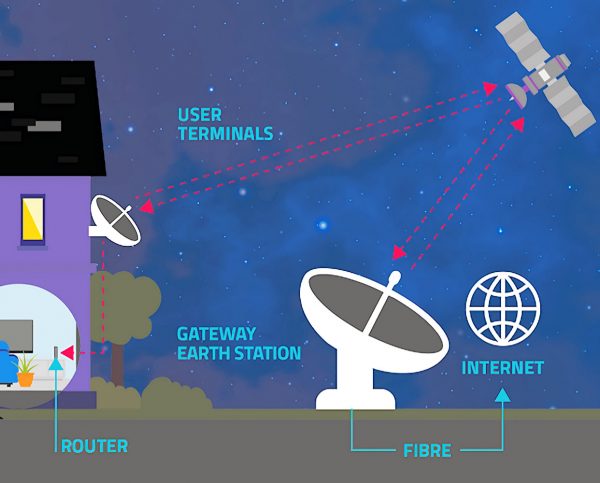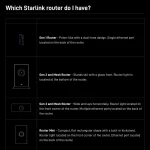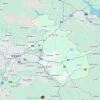Ofcom UK Gives Capacity Boost to Satellite Broadband Services

Ofcom has today published a refreshed strategy for managing radio spectrum used by the space sector, which among other things will make more spectrum frequency in the 14.25 – 14.5GHz “Ku band” available to satellite broadband operators (capacity boost) and approve new earth stations for use by Starlink and Telesat.
Until recently, most broadband internet connectivity services delivered to UK consumers via satellite came from huge double-decker-bus sized spacecraft (platforms) that were positioned high above the Earth in geostationary orbits (GEO / GSO) – often at altitudes of about 35,000km+ from the planet’s surface. Such platforms deliver strong coverage, but they can also struggle to adapt to rising capacity demands and suffer from painfully slow connection latency.
However, over the past few years we’ve seen the emergence of a new generation of Non-Geostationary Satellite Orbit (NGSO) satellites, such as the mega constellations in Low Earth Orbit (LEO – typically around 500-1300km) from OneWeb and Starlink that cost a lot to launch, but are better able to adapt to capacity demands and deliver fast latency times (under 100 milliseconds), as well as ultrafast (100Mbps+) speeds.
Advertisement
The changing market has forced Ofcom to update their strategy toward spectrum use in space, which in turn has today resulted in several changes.
Key Changes
➤ Doubling capacity available for a range of services to transmit data to satellites by making spectrum in the 14.25 – 14.5GHz “Ku band” available to satellite broadband operators (here). The band is already being used by fixed wireless links, radio astronomy and fixed satellite services, although fixed links are either ceasing or migrating out of the band by the end of 2024 (they’ll be protected until then).
Existing users and key sites in other areas will also be protected, such as is the case for radio astronomy sites in the 30MHz between 14.47-14.5GHz.
➤ Ofcom has approved applications (here) for 6 non-geostationary orbit earth station (gateway) licences from Starlink (SpaceX) – operating in the Ka band frequencies, which will boost their network capacity for customers in the UK and beyond. SpaceX already operates three gateways in the UK (e.g. Goonhilly).
➤ Ofcom has approved an application from Telesat (here) for an Earth Station Network Licence (ESNL) for its future Lightspeed constellation, meaning it will be able to offer satellite broadband connectivity to people and businesses in the UK for the first time – once it goes live. Telesat plans to use the radio frequencies 27.5-27.8185GHz; 28.4545-28.8265GHz and 29.5-30GHz for their service.
The extra spectrum will be of benefit to both traditional broadband satellites in a high geostationary orbit (GSO) and the latest generation of smaller Low Earth Orbit (LEO) and Medium Earth Orbit (MEO) satellites in non-geostationary orbit (NGSO).
David Willis, Spectrum Group Director at Ofcom, said:
“You can’t see or feel radio spectrum, but all our wireless communication depends on it. Incredible new services are being developed, meaning demand for spectrum is growing.
This is particularly true in space, where satellite technology offers faster and more reliable internet services for those living in remote areas, as well as planes and ships. Today is one small step in our work to make sure everyone can benefit from these giant leaps in innovation.”
The regulator has also issued a general statement on their Space Spectrum Strategy, which summarises some of their thinking in terms of their approach to protecting other services from “harmful interference” and addressing other issues, such as space debris and safe access to space; for example, by considering spectrum access requirements for radars to track objects in space.
The new NGSO licensing framework forms part of all this, but as space has always been a global affair then Ofcom said they would also “pursue improvements to international NGSO rules” and will “consider providing access to more spectrum” in the future, such as to enable the delivery of higher speed satellite broadband services to more businesses and people.
Advertisement
Mark is a professional technology writer, IT consultant and computer engineer from Dorset (England), he also founded ISPreview in 1999 and enjoys analysing the latest telecoms and broadband developments. Find me on X (Twitter), Mastodon, Facebook, BlueSky, Threads.net and Linkedin.
« ISP Virgin Media O2 UK Launch Black Friday Broadband Sales






















































Comments are closed